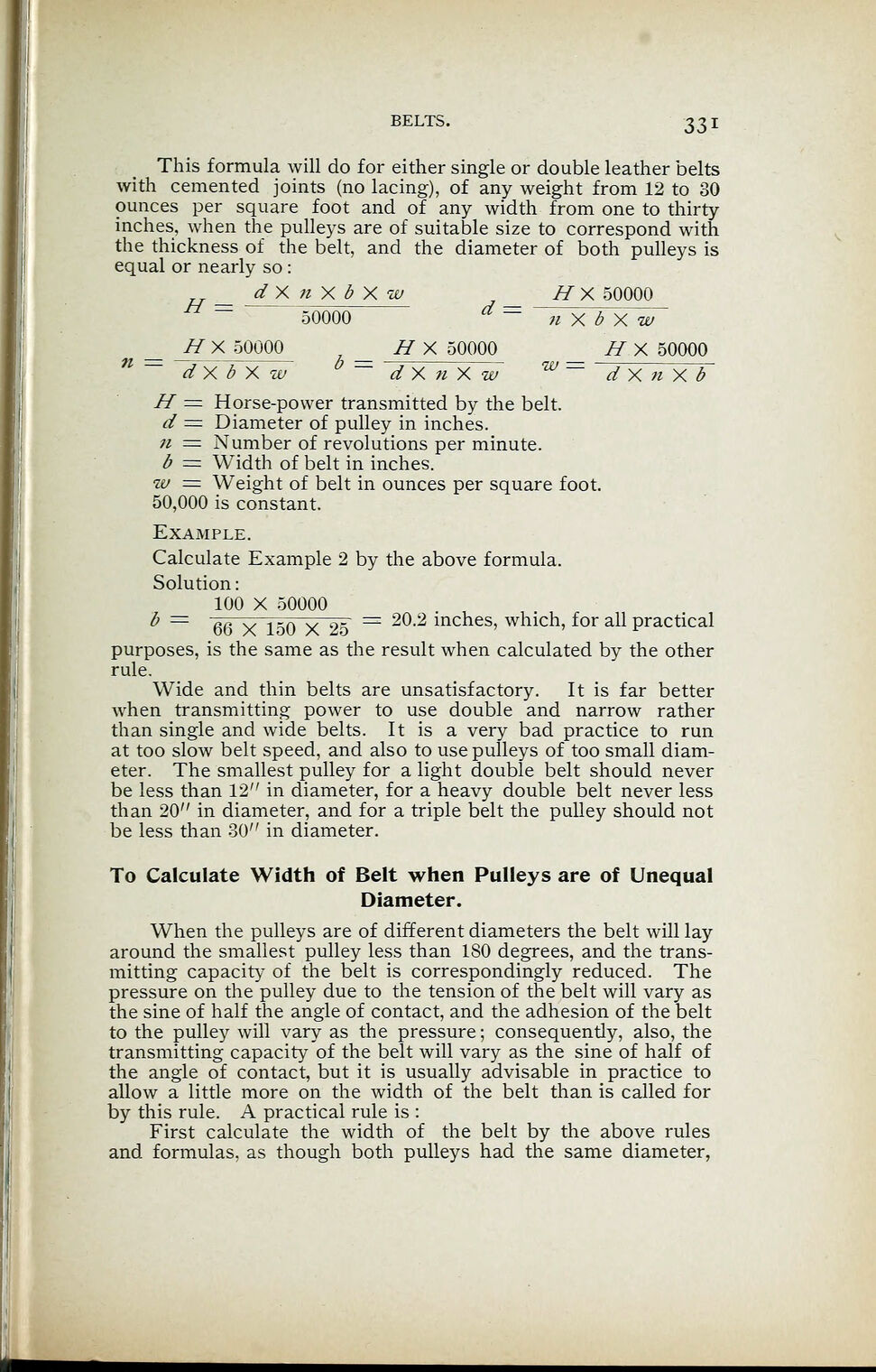
Full resolution (JPEG) - On this page / på denna sida - Belts - To calculate size of belt for given horse-power when diameter of pulleys and number of revolutions are known - To calculate width of belt when pulleys are of unequal diameter

<< prev. page << föreg. sida << >> nästa sida >> next page >>
Below is the raw OCR text
from the above scanned image.
Do you see an error? Proofread the page now!
Här nedan syns maskintolkade texten från faksimilbilden ovan.
Ser du något fel? Korrekturläs sidan nu!
This page has never been proofread. / Denna sida har aldrig korrekturlästs.
BELTS. 331
This formula will do for either single or double leather belts
with cemented joints (no lacing), of any weight from 12 to 30
ounces per square foot and of any width from one to thirty
inches, when the pulleys are of suitable size to correspond with
the thickness of the belt, and the diameter of both pulleys is
equal or nearly so
:
_ d X nX b Xw HX 50000
50000
L
" — fix b Xw
H X 50000 , H X 50000 H X 50000
dX b X w d X nX w dXnXb
H = Horse-power transmitted by the belt.
d = Diameter of pulley in inches.
n == Number of revolutions per minute.
b = Width of belt in inches.
w = Weight of belt in ounces per square foot.
50,000 is constant.
Example.
Calculate Example 2 by the above formula.
Solution
:
100 X 50000
b = qq x 15Q x 25
= 20-2 inches, which, for all practical
purposes, is the same as the result when calculated by the other
rule.
Wide and thin belts are unsatisfactory. It is far better
Avhen transmitting power to use double and narrow rather
than single and wide belts. It is a very bad practice to run
at too slow belt speed, and also to use pulleys of too small diam-
eter. The smallest pulley for a light double belt should never
be less than 12" in diameter, for a heavy double belt never less
than 20" in diameter, and for a triple belt the pulley should not
be less than 30" in diameter.
To Calculate Width of Belt when Pulleys are of Unequal
Diameter.
When the pulleys are of different diameters the belt will lay
around the smallest pulley less than 180 degrees, and the trans-
mitting capacity of the belt is correspondingly reduced. The
pressure on the pulley due to the tension of the belt will vary as
the sine of half the angle of contact, and the adhesion of the belt
to the pulley will vary as the pressure ; consequently, also, the
transmitting capacity of the belt will vary as the sine of half of
the angle of contact, but it is usually advisable in practice to
allow a little more on the width of the belt than is called for
by this rule. A practical rule is :
First calculate the width of the belt by the above rules
and formulas, as though both pulleys had the same diameter,
<< prev. page << föreg. sida << >> nästa sida >> next page >>